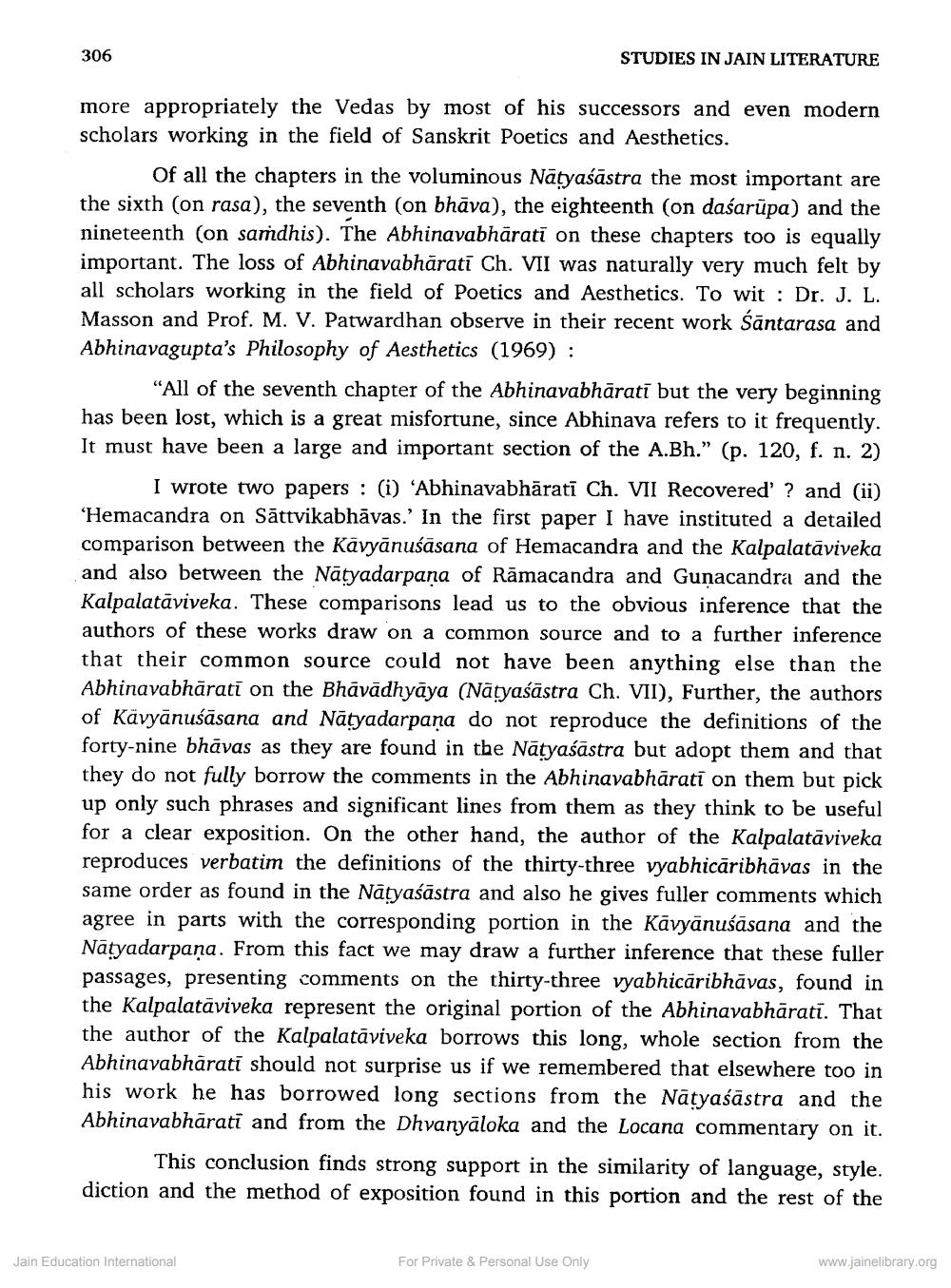________________ 306 STUDIES IN JAIN LITERATURE more appropriately the Vedas by most of his successors and even modern scholars working in the field of Sanskrit Poetics and Aesthetics. Of all the chapters in the voluminous Natyasastra the most important are the sixth (on rasa), the seventh (on bhava), the eighteenth (on dasarupa) and the nineteenth (on samdhis). The Abhinavabharati on these chapters too is equally important. The loss of Abhinavabharati Ch. VII was naturally very much felt by all scholars working in the field of Poetics and Aesthetics. To wit : Dr. J. L. Masson and Prof. M. V. Patwardhan observe in their recent work Santarasa and Abhinavagupta's Philosophy of Aesthetics (1969) : "All of the seventh chapter of the Abhinavabharati but the very beginning has been lost, which is a great misfortune, since Abhinava refers to it frequently. It must have been a large and important section of the A.Bh." (p. 120, f. n. 2) I wrote two papers : (i) 'Abhinavabharati Ch. VII Recovered'? and (ii) "Hemacandra on Satrvikabhavas.' In the first paper I have instituted a detailed comparison between the Kavanusasana of Hemacandra and the Kalpalataviveka and also between the Natyadarpana of Ramacandra and Gunacandra and the Kalpalataviveka. These comparisons lead us to the obvious inference that the authors of these works draw on a common source and to a further inference that their common source could not have been anything else than the Abhinavabharati on the Bhavadhyaya (Natyasastra Ch. VII), Further, the authors of Kavyanusasana and Natyadarpana do not reproduce the definitions of the forty-nine bhavas as they are found in the Natyasastra but adopt them and that they do not fully borrow the comments in the Abhinavabharati on them but pick up only such phrases and significant lines from them as they think to be useful for a clear exposition. On the other hand, the author of the Kalpalataviveka reproduces verbatim the definitions of the thirty-three vyabhicaribhavas in the same order as found in the Natyasastra and also he gives fuller comments which agree in parts with the corresponding portion in the Kavyanusasana and the Natyadarpana. From this fact we may draw a further inference that these fuller passages, presenting comments on the thirty-three vyabhicaribhavas, found in the Kalpalataviveka represent the original portion of the Abhinavabharati. That the author of the Kalpalataviveka borrows this long, whole section from the Abhinavabharati should not surprise us if we remembered that elsewhere too in his work he has borrowed long sections from the Natyasastra and the Abhinavabharati and from the Dhvanyaloka and the Locana commentary on it. This conclusion finds strong support in the similarity of language, style. diction and the method of exposition found in this portion and the rest of the Jain Education International For Private & Personal Use Only www.jainelibrary.org




